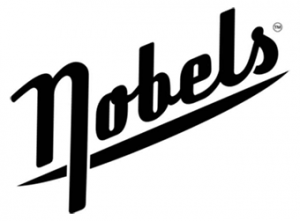NOBELS ODR-1 HISTORY
by Bernhard Kurzke
Why did Nobels create the ODR-1?
In the 80’s effect pedals in Germany mainly had been BOSS and some Ibanez. When the US$ got stronger, prices went up. To compansate companies like Ibanez tried to make effect pedals with plastic housings “Soundtanks”. A no-go for most musicians. We had access to Korean manufacturing (CORT + MUSE) due to our contract with HOHNER.
When we decided to creat a complete line of effect pedals we had to define the sounds. We did not like the sound of the Ibanez tubescreamer. We called it the “NASAL” sound.
We did focus on a totally “OPEN” sound. Natural, where the character of you guitar come through.

OD-1 Prototypes with and without Spectrum Control

Kai Tachibana was my employee for 24 years. He started in the early 80’s. He had been one of the first repairmen at No1 Retail. A real rocker. Tall, black leather, motor bike, long hair, straight and genious (but also chaotic in the beginning).
No1 repairman Kai turned out to became a genious in sound design. Later he even made his Master at Hamburg University. His overdrive sound success derived from his deep understanding of the interaction of Tubes at the limit, Transformers at the limit and Speakers at the limit. In 1992 it took him almost a year to tailor the electronics of the ODR-1 to his ear. For several months he worked in the workshop for 2 – 3 hours of FULL POWER listening to Marshall-stack-volume. Then he modified electronics a bit and took 1 day off to recover his hearing. Then he came back, checked his last days modifications and … another 2 – 3 hours of FULL POWER… and so on. But our plans worked out:
opposite to the existing “nasal” overdrives Kai created the “natural” overdrive. THANK YOU Kai!

Jerry Donahue, Tom Bukovac, John Shanks, Tim Pierce,++ fell in love with this “Nashville Sound”.
Our mistake 30 years ago: we paint it in GREEN.
Our designed product had been sold though various channels and under several barnd names: Fender, Rhino/Jam (UK), Series10, JHS, Shadow, Rok Axe, Impact, Kramer, Dean, Washburn
The market response to our ODR-1 in Germany had been soft (You are only a real brand if you are successful in the USA!). Fortunately the Nashville community of session players and studio musicians loved and understood the concept and sound.
In competitive clubs in Nashville you use a small pedalboard with 1 overdrive that must be able to do various jobs. Adjust perfectly to different amps, give you enough bottom end in a single-coil dominated environment, keeps the charactor of your instrument unique and punches through when it comes to soloing. Jerry Donahue, John Shanks, Tom Bukovac, Tim Pierce, etc. understood that.
SPECTRUM: turning the pot from “NOON” clockwise increases low-mids (300HZ)+ upper frequencies (3KHZ) at the same time.
Turning the pot counter-clockwise reduces low-mids (300HZ)+ upper frequencies (3KHZ) at the same time. The mids stay untouched.
Film Capacitors: yes, in SMD we kept some “old style” capacitors as only they gave us the old ODR-1 sound. (Kai did and approved those modifications – same with the ODR-mini)
18V had been requests from musicians … like almost all features in our products are input from users.
Same with the BASS CUT: perfect for Single Coils, but with some humbuckers and active pickups the bottom end should be “tamed”. Target frequency 80Hz.
We prefer our silent switching, had never problems with those switches and never had any sound complains about our buffer system.
 The “ODR-1 30th Anniversary” is extremely close to the Best of the “Vintage” ODR-1 sounds. To keep prices low in 1993 we had to use components with 5% tolerance (+ and -). So each old ODR-1 did sound differently to the neighbour ODR-1 of the same production run (up to 10%!). We tailored the 30th-Anniversary to the best sounding vintage ones we could find and use 1% components.
The “ODR-1 30th Anniversary” is extremely close to the Best of the “Vintage” ODR-1 sounds. To keep prices low in 1993 we had to use components with 5% tolerance (+ and -). So each old ODR-1 did sound differently to the neighbour ODR-1 of the same production run (up to 10%!). We tailored the 30th-Anniversary to the best sounding vintage ones we could find and use 1% components.
End of the year you will find the “final and unlimitied edition” of the ODR (in our vintage big housing) with extended functions in switching, boost and by pass.
The ODR-1(bc) is the Standard and will stay that way unmodified.
